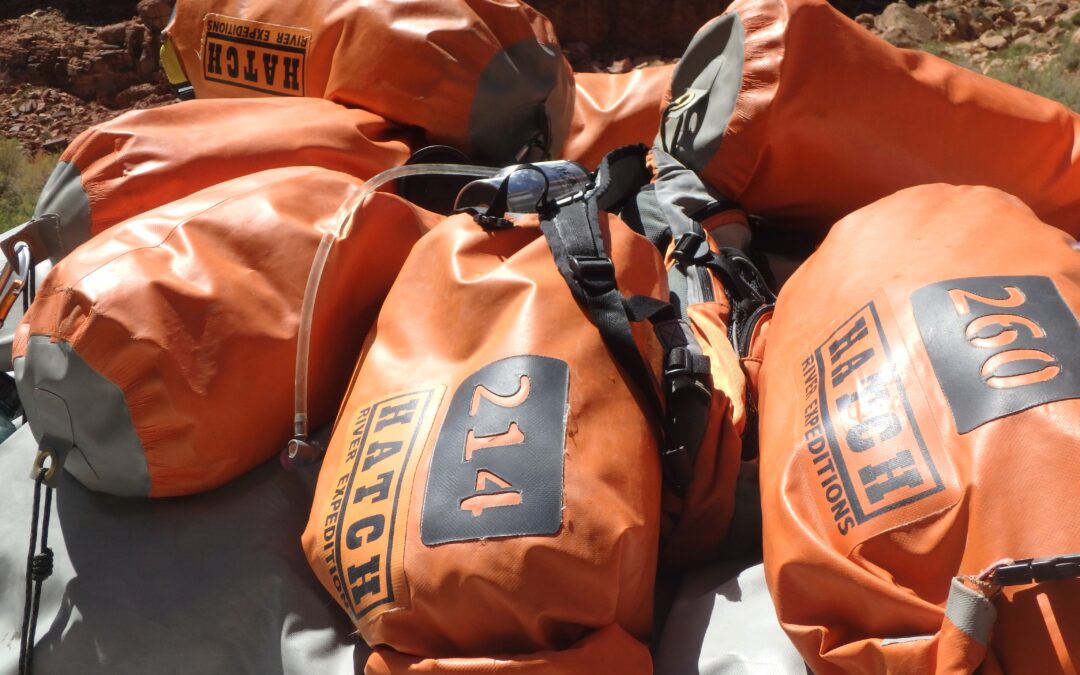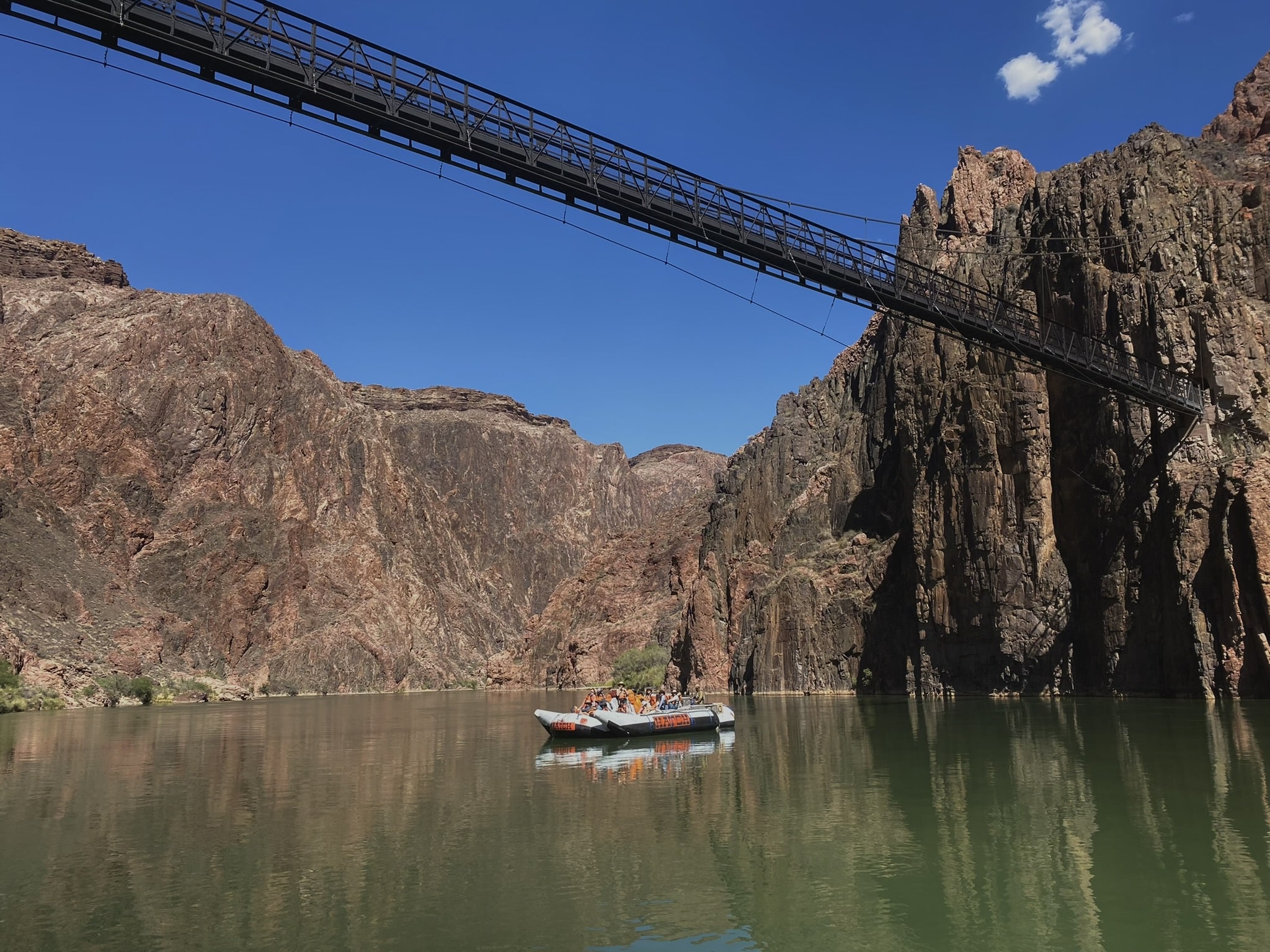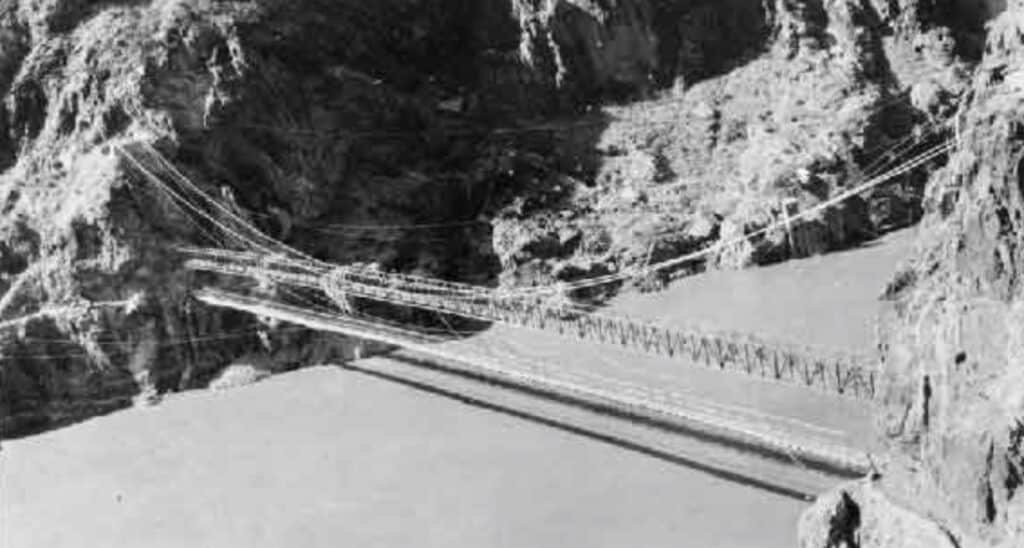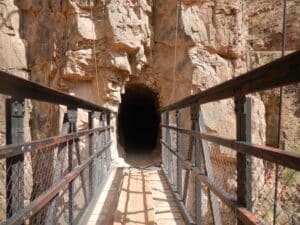The question we hear most often is: “What do I need in my day bag today?” The easiest answer? Be like a Boy Scout: Always be prepared.


As you near the halfway point of your journey, you’ll pass beneath one of the Grand Canyon’s most impressive engineering feats: the Kaibab Suspension Bridge, also known as the Black Bridge. This bridge connects the North and South Kaibab Trails across the Colorado River, creating a direct link between the two rims and allowing hikers and mule trains to traverse the canyon with ease.
While the bridge you see today is a marvel in its own right, it’s not the original. The first Kaibab Suspension Bridge, built in 1921, was much smaller and far less stable. As tourism to the Grand Canyon grew and the number of visitors to the newly opened Phantom Ranch increased, it quickly became apparent that the old bridge could not keep up.
The original bridge was too narrow to accommodate anything beyond a single mule at a time, making mule trains slow and difficult to move. But the real problem was the bridge’s stability. The Grand Canyon is notorious for its unpredictable weather—violent monsoons and strong winds are common—and the old bridge would often sway in the harsh conditions. This movement not only caused structural damage but also frightened tourists. It was clear: the bridge had to be replaced.
In March 1928, construction began on a new, larger bridge that could handle mule trains and withstand the canyon’s extreme weather. The challenge was immense. The new bridge needed to be longer than its predecessor, which meant it had to be anchored deep into the canyon walls. This required drilling into the Vishnu Schist and Zoroaster Granite—some of the hardest rock formations in the world—making construction even more difficult.
The new bridge would be built 16 feet above the old one, and the original bridge had to remain in service until the new one was completed. This created an extra layer of difficulty for the construction crews. They had to be extraordinarily careful when drilling for the new anchors, as using explosives or heavy machinery could jeopardize the stability of the old bridge and risk its collapse.
Building the bridge also required transporting 120 tons of materials—everything from steel beams to explosives—down the steep Kaibab Trail by mule and man. It took a full three months just to get everything to the construction site.

 Once the anchors were set, the construction team faced the delicate task of building the suspension bridge itself. Hanger cables were suspended across the canyon, and steel beams and floor plates were carried across using the old bridge. This careful process involved moving two vertical beams and a floor beam at a time, before finally assembling the floor of the new bridge.
Once the anchors were set, the construction team faced the delicate task of building the suspension bridge itself. Hanger cables were suspended across the canyon, and steel beams and floor plates were carried across using the old bridge. This careful process involved moving two vertical beams and a floor beam at a time, before finally assembling the floor of the new bridge.
The project took a year to complete, and in 1929, the new Kaibab Suspension Bridge, at 440 feet long, opened to the public. In addition to the bridge, a 105-foot approach tunnel was also constructed to facilitate access to the bridge from the South Kaibab Trail.
While the Kaibab Suspension Bridge might not be the largest or most elaborate bridge in the world, its construction is an extraordinary testament to human ingenuity. In one of the most challenging environments on Earth, with limited technology and resources, the engineers and workers of the 1920s managed to create a structure that would not only stand the test of time but also improve the experience for countless visitors to the Grand Canyon.
Today, the Kaibab Suspension Bridge remains an essential crossing for hikers, pack mules, and adventurers looking to explore both the North and South Kaibab Trails. It’s a vital link that continues to connect people to one of the world’s most awe-inspiring natural wonders.
To see more pictures of the bridges construction check out this gallery on the Library of Congress website!
Lizards in the Grand Canyon If you’ve ever been anywhere in the Southwest, chances are you’ve seen a lizard. These little reptiles have become nearly synonymous with the desert landscapes of the region. Walk into a gift shop in Arizona and you’ll find lizards on...
It may surprise some to learn that toads can thrive in desert environments, but the Red Spotted Toad thrives within the Grand Canyon…
The Grand Canyon is home to an incredible variety of wildlife, some of which only live in the Grand Canyon, like the Grand Canyon Rattlesnake